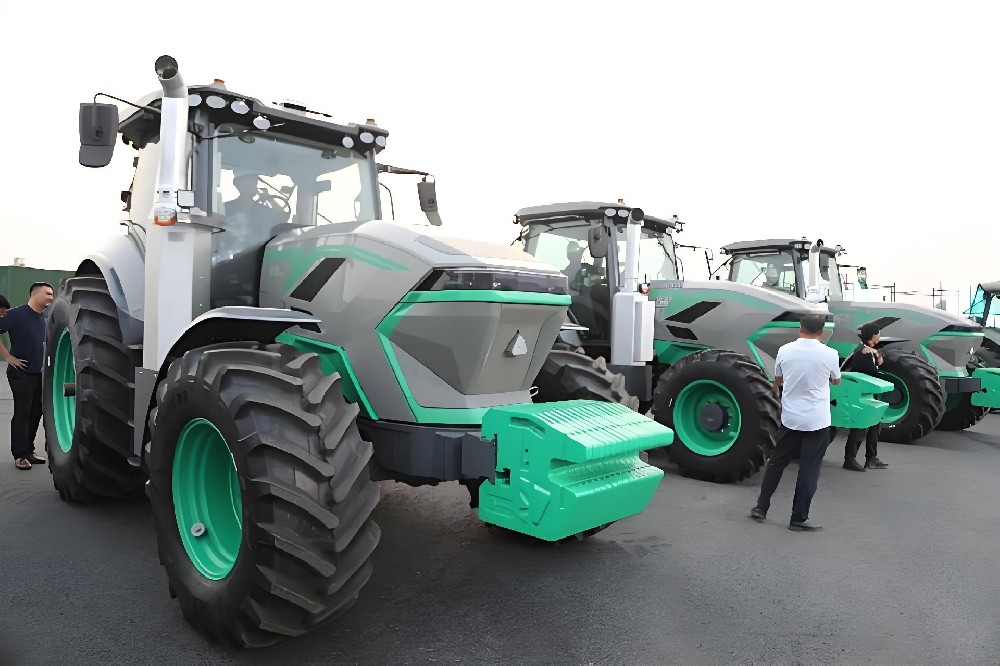Tractor Technology Trends 2025: The Future of Smart Farming
As agricultural modernization continues to accelerate, tractors—the core machinery in farming—are undergoing an unprecedented technological transformation. In 2025, the key trends in the tractor industry are no longer just “power” or “mechanical design,” but rather “intelligence,” “automation,” and “sustainability.” These innovations are reshaping agricultural practices and presenting both new challenges and opportunities for global tractor manufacturers.
1. Smart Tractors: Bridging Big Data with Precision Agriculture
With the integration of IoT, AI, and 5G technologies, smart tractors have become a critical component of digital farming. In 2025, smart tractors will feature GPS-based navigation, autonomous driving, and remote control, enabling full-process precision management of plowing, sowing, fertilizing, and harvesting.
Key advantages include:
GPS navigation and route planning to boost precision and reduce resource waste
Sensor data feedback for real-time monitoring of soil moisture and crop health
Remote diagnostics and maintenance through cloud-based monitoring platforms
AI-driven task optimization to adjust speed, depth, and path based on real-time data
2. Automation: From Operator Assistance to Full Autonomy
Automation in 2025 goes far beyond driver assistance. Fully autonomous tractors will work across large-scale farms, integrated with agricultural management systems to perform synchronized and uninterrupted operations.
Key automation technologies:
Automatic obstacle avoidance and safety systems
Task scheduling systems to plan and execute work based on field layout
Multi-machine coordination systems to manage simultaneous operations for enhanced efficiency
With rising labor costs and rural workforce shortages, automated tractors are becoming a necessity for future farming.
3. Sustainability: Green Power and Eco-Friendly Designs
Driven by global climate goals, sustainable development is at the forefront of agricultural machinery innovation. In 2025, electric tractors and hybrid power models will accelerate the replacement of traditional diesel engines.
Emerging sustainability trends:
New energy sources: battery-powered, solar-assisted, and initial hydrogen fuel applications
Low-emission engines and energy-saving hydraulic systems to reduce carbon footprints and noise
Recyclable materials and modular designs to enhance environmental performance and ease of maintenance
Additionally, manufacturers are adopting green manufacturing practices such as eco-friendly painting and recycling to create a sustainable production ecosystem.

4. Global Trends with Local Adaptation
While smart and green tractors are gaining traction in developed countries, emerging markets like China, India, and Southeast Asia are rapidly upgrading their mechanized agriculture. In 2025, tractor technology development will follow a dual path of global innovation and localized adaptation:
Developed markets prioritize high-end, fully automated smart tractors
Emerging markets favor mid-power, affordable models with basic smart functions
Localized service and AI optimization tailored to regional farming needs
Conclusion: Seizing the Opportunity to Shape the Future of Agriculture
In 2025, tractor technology is evolving from traditional machinery to intelligent, connected ecosystems. It marks a shift from standalone products to integrated digital agriculture platforms. As a dedicated tractor manufacturer, we are committed to innovation and market responsiveness, offering efficient, smart, and eco-friendly solutions for tomorrow’s agriculture.
5. Get Your Personalized Solution Now
→ Call the selection hotline: (also supports accessory customization inquiries).









